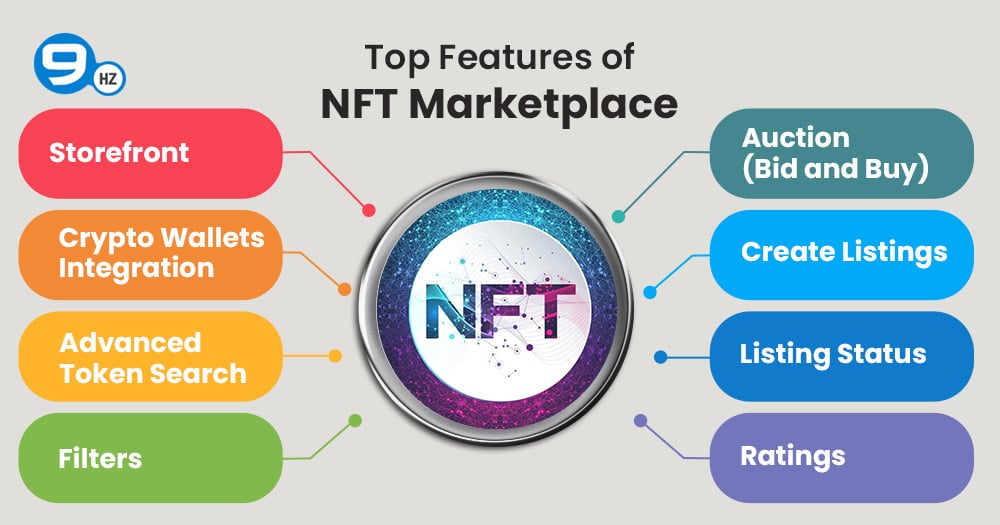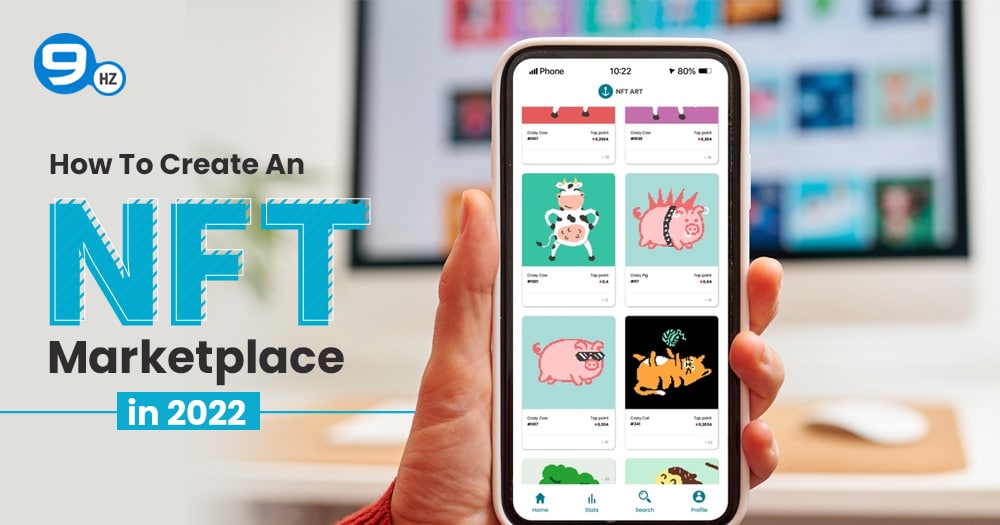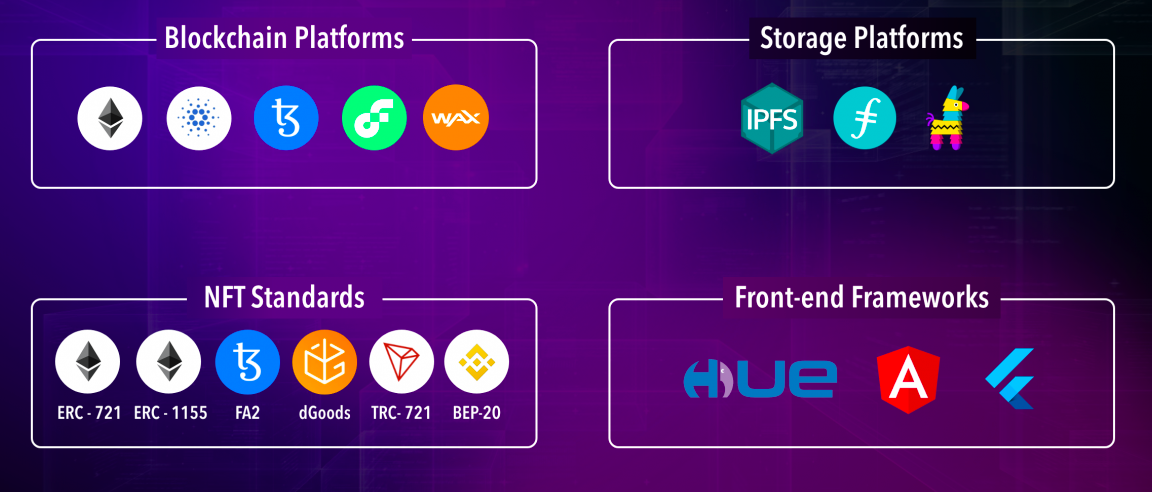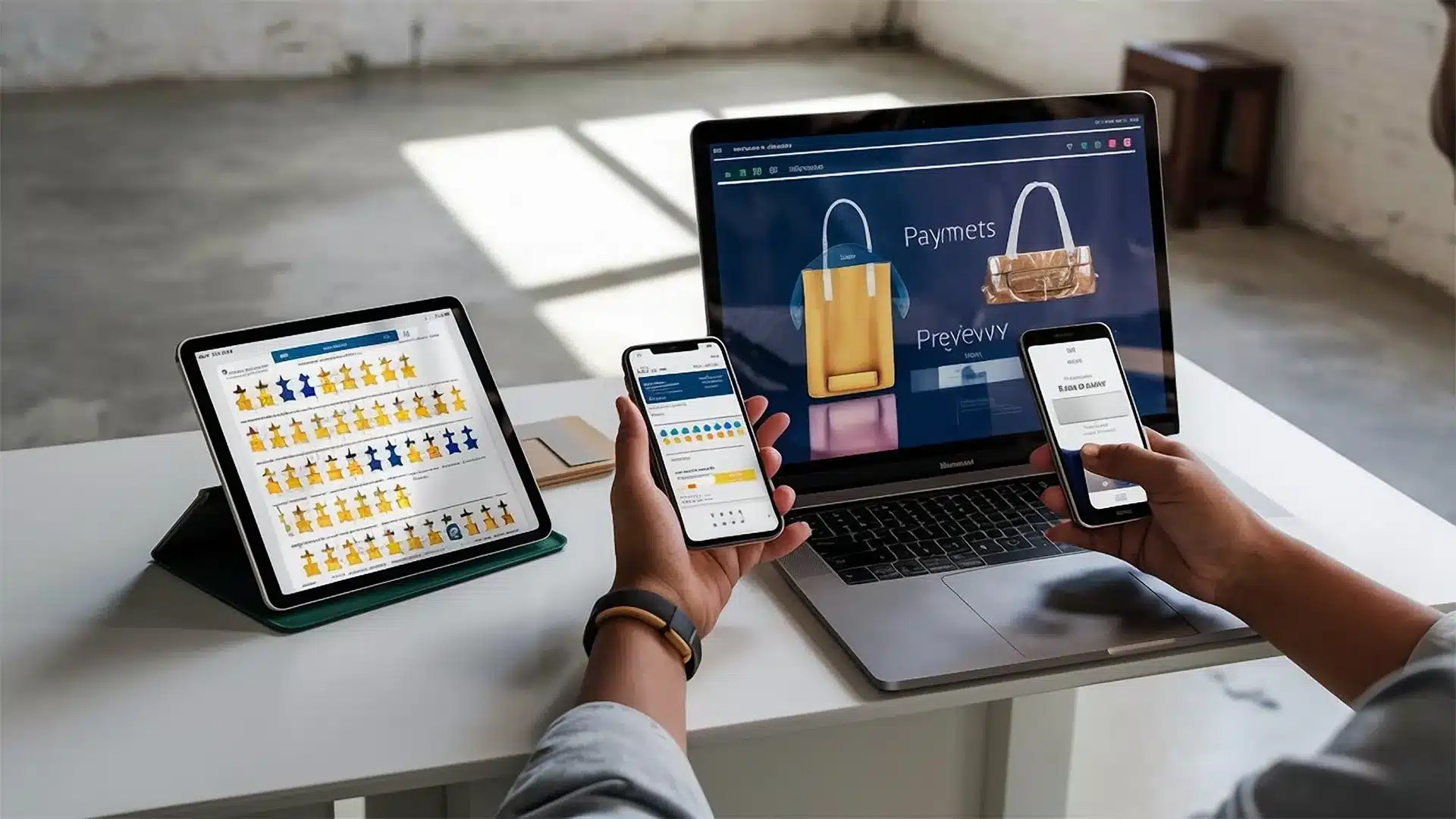According to Cointelegraph’s recent article, the global NFT market is expected to generate nearly $231 billion in revenue by 2030. This rapid growth is being driven by a number of factors, including the increasing popularity of digital collectibles, the rise of cryptocurrency, and the growing adoption of blockchain technology. In this guide, we will explore how to create an NFT marketplace and how much it cost.
NFTs offer a unique opportunity for collectors and investors alike, as they can be bought, sold, or traded like any other asset. However, unlike traditional assets, NFTs are stored on the blockchain, making them immutable and tamper-proof.
This gives NFTs a unique level of authenticity and scarcity that is proving to be highly desirable among collectors. With the global NFT marketplace projected to continue growing at a rapid pace, it is likely that we will see even more innovative uses for this exciting new technology in the years to come.
According to data from DappRadar, the top three NFT marketplace platforms by market share are OpenSea (47%), Rarible (24%), and CryptoSlam (9%). These platforms have all seen a significant increase in traffic and transactions in recent months. In addition, new players are entering the market all the time, so the landscape is constantly changing.
You can create an NFT marketplace with the help of this guide. As well as you can hire any top-rated NFT marketplace development company to convert your project idea into reality.
What is an NFT Marketplace?
The nft marketplace is a digital platform that allows users to buy and sell non-fungible tokens (NFTs). NFTs are digital assets that are unique and cannot be replicated. They are often used to represent items in-game assets, collectibles, or other virtual worlds.
The nft marketplace provides a convenient way for users to trade NFTs. It also allows users to find buyers for their NFTs, and to set prices for their NFTs. The NFT marketplace is a great way for collectors and investors to buy and sell NFTs.
There are many different nft marketplaces, each with its own advantages and disadvantages. Some nft marketplaces allow users to buy and sell NFTs directly, while others require users to use an intermediary.
Direct Buying and Selling
Some nft marketplaces like OpenSea, allow users to buy and sell NFTs directly. This can be convenient for users who want to trade frequently, or who don’t want to use an intermediary. However, it can also be risky, as there is no guarantee that the person you’re dealing with is legitimate.
In addition, direct buying and selling can be expensive. Some nft marketplaces charge buyers a fee, and some also charge sellers a fee. These fees can add up, and can make buying and selling NFTs less profitable.
Intermediary
Some nft marketplaces, such as TokenMarket, require users to use an intermediary. Intermediaries are companies that facilitate the buying and selling of NFTs. They typically charge a fee for their services.
How to Create an NFT Marketplace?- Development Process
With the recent explosion in popularity of non-fungible tokens (NFTs), many entrepreneurs are looking to get in on the action by creating their own NFT marketplace. However, creating a successful NFT marketplace is not a simple task. In this article, we will provide an overview of how to develop an NFT marketplace, including some of the key considerations and challenges you will need to overcome.
Here are the steps do you need to take for NFT marketplace development
1. Choose Your Niche Marketplace and Finalize development Stretagy
Niche marketplaces are online platforms that focus on a specific type of product, service, or user. By catering to a specific audience, niche specific marketplaces can offer a more targeted and personalized experience than general marketplaces. Niche marketplaces also tend to be more intimate and close-knit communities, which can be beneficial for both buyers and sellers. For example, there are some niche-specific NFT marketplaces like NFT marketplace for photographers, gaming assets.
You’ll need to consider the following questions when you finalize your development strategy:
- Do I want to create from scratch or use a white label NFT marketplace?
- How will my NFT marketplace platform be different from others?
- Will my clients be able to develop their NFT assets on the platform?
- Which of the NFT standards should we back?
- How will the customers pay for non fungible tokens?
2. Define Project and UI/UX Design
The documentation and design of the project are the initial steps in creating a NFT marketplace. It’s a routine, but if you don’t have any documents, you risk losing time in the future.
Once you are done with the documentation, you can move on to prototyping the user interface (UI). At this stage, you should already know whether your users prefer mobile apps or a desktop experience. Your user interface must be simple and easy to use. A good UI/UX improves usability and gives the platform a nice feel and aesthetic.
3. Move To Creation
Next, it’s time to put your design ideas into action. The front-end development requires you to choose the framework for your objectives. Some people may consider hiring a professional NFT developer to ensure high performance and reputation since proficient NFT developers can help save time and money.
4. Use Smart Contracts
Back-end development for an NFT marketplace is not the same as for a traditional marketplace. As a reputed Smart contract development services provider we have an experienced team of solidity developers. Hence, most of the data is verified using the latest technology stacks.
5. Testing and Deployment
You should not hurry to release the service until you check its functionality. The final product should correspond to your expectations. Hence, testing and deployment are the last quintessential stages.
QA and testing focus on detecting and avoiding potential problems. The approach guarantees that you’re not wasting your time and money coding something that doesn’t click with customers. After testing, you can update the design to incorporate feedback from real users.
Software QA and testing also ensure that your NFT marketplace project runs well. Furthermore, this phase provides app credibility and excellent functionality.
6. Monitoring and Upgradation
Finally, even after the formal launch, you must continue to work on your NFT marketplace if you want it to be a huge success. Great products are constantly evolving to address new opportunities and satisfy their clients.
The admin portal enables you to keep track of various aspects of your NFT marketplace performance. It includes tools like Google Analytics and custom analytics that pull data from the platform’s key functionalities.
Top Features to Develop NFT Marketplace

You can easily offer to create an NFT marketplace like rarible for numerous businesses, artists, and celebrities looking to launch their NFTs.
However, there are some essential features that you must not miss to incorporate into your NFT marketplace to become successful.
1. Storefront
Since all NFT marketplaces are like e-commerce platforms, they need a storefront for displaying the inventory. The inventory can be in the form of digital art, videos, songs, trading cards, other digital assets or unique physical objects or documents.
A storefront that functions as a dashboard improves the chances of being more successful. It should also provide information such as bids, previews, owners, and pricing history, among other things.
2. Crypto Wallets Integration
Not all NFT marketplace solutions are appropriate because some may pose a risk to the security of funds. Users require a secure location to receive and store NFT tokens. As a result, when you create your own NFT marketplace, you must have an initial wallet that allows users to save and submit tokens safely.
Instead of forcing your customers to sign up for other online crypto wallets, create and offer a connected, “native” wallet. To integrate your platform, you can either build your wallet or use existing wallets like Formatic, Coinbase, or MyEtherWallet. Make the process of saving, submitting, and retrieving tokens as straightforward as feasible.
3. Advanced Token Search
Your marketplace should allow users to obtain complete information on the products they require quickly. Client satisfaction improves when they can search easily.
Every product should be organized and displayed with some features in your NFT marketplace app (for instance, art, images, music, videos, memes).
4. Filters
This feature is similar to the previous one since the goal is to assist clients in quickly and easily select the desired product. You may separate all offers into different groups that influence customer decisions.
The filters can be – price, new items, hot deals, best-sellers, and other factors. Users will select things they require more quickly, which increases the likelihood of buying them.
5. Auction (Bid and Buy)
Any NFT marketplace work must include the ability to both purchase and bid on products. It attracts more users because some people prefer flexible pricing and don’t want to pay full price for collectibles.
The NFT marketplace should also include a bid validity date and information on the current status of those offers. It will assist them in deciding whether to purchase or continue to place new offers. A separate key feature that you can include is – an auction watchlist.
6. Create Listings
At the time of marketplace creation, make it possible for your customers to build and send digital collectibles. Ensure that they will be able to complete it with the least amount of effort.
Additionally, develop a page where they may upload files and describe the product in depth. Tags, titles, and descriptions are all critical pieces of information you can include.
7. Listing Status
Checking the status of the confirmation procedure is possible with the listing status feature. This functionality comes in handy when it comes to implementing collectible verification. It is helpful to those who give products and complete the product authentication process.
8. Ratings
It’s a feature for newcomers who aren’t sure where to start or how to work in an NFT marketplace. Users can determine whether or not a seller is trustworthy by looking at their rating.
Participants on an NFT marketplace can rate others and write comments based on their own experiences. It allows others to check a user’s credibility.
NFT Marketplace Development Tech Stack
The technology stack required for building an NFT marketplace platform is relatively simple and can be easily mastered by anyone with a basic understanding of blockchain and web development. With that said, if you are looking to build a more complex NFT Marketplace platform, then you may need to invest some time in learning additional technologies. Nevertheless, the effort will be well worth it as you will be able to create a truly unique and powerful NFT marketplace that can revolutionize the way we interact with digital assets.
Blockchain Platforms to Build an NFT Marketplace
Ethereum
The most popular blockchain platform for NFT marketplaces is Ethereum. This is because Ethereum provides the perfect combination of features that are required for an NFT marketplace, including support for smart contracts, ERC-721 tokens, and a wide range of decentralized applications (dApps). In addition, Ethereum is also very well suited for handling large amounts of transactions, which is essential for an NFT marketplace that is expected to see a lot of activity.
Flow
Another blockchain platform that is well-suited for building an NFT marketplace is Flow. Flow provides all of the same features as Ethereum, but it also has some unique advantages, such as scalability and support for multiple tokens. In addition, Flow also offers a wide range of developer tools that make it easier to build dApps and smart contracts.
Tezos
Tezos is another blockchain platform that offers all of the features required for an NFT marketplace. In addition, Tezos also provides support for smart contracts and a wide range of dApps. However, one of the unique features of Tezos is its on-chain governance model, which allows for a more democratic decision-making process when it comes to upgrading the blockchain.
Cardano
–
Cardano is a blockchain platform that is similar to Ethereum in many ways. However, one of the main differences between Cardano and Ethereum is that Cardano uses a proof-of-stake consensus algorithm, which is more energy-efficient than Ethereum’s proof-of-work algorithm. In addition, Cardano also offers a wide range of developer tools and support for smart contracts.
Storage Platforms for Marketplaces
IPFS
The InterPlanetary File System (IPFS) is a decentralized storage platform that can be used to store and distribute files. IPFS is well-suited for storing large files, such as images and videos. In addition, IPFS is also resistant to censorship, which makes it a good option for those who want to build a censorship-resistant NFT marketplace.
Filecoin
Filecoin is a decentralized storage platform that is similar to IPFS. However, unlike IPFS, Filecoin uses a tokenized system to incentivize users to store files. In addition, Filecoin also offers a wide range of developer tools and support for smart contracts.
Pinata
Pinata is a decentralized storage platform that is similar to IPFS and Filecoin. However, Pinata focuses on providing an easy-to-use interface for users. In addition, Pinata also offers a wide range of developer tools and support for smart contracts.
NFT Standards
ERC-721
The most popular standard for NFTs is ERC-721. This standard was created by the Ethereum Foundation and it defines a set of rules that must be followed in order for a token to be considered an ERC-721 token.
ERC-1155
Another popular standard for NFTs is ERC-1155. This standard was created by Enjin and it defines a set of rules that must be followed in order for a token to be considered an ERC-1155 token.
FA2
The FA2 standard is a newer standard that was created by the Tezos Foundation. This standard defines a set of rules that must be followed in order for a token to be considered an FA2 token.
dGoods
The dGoods standard is a newer standard that was created by the Blockstack Foundation. This standard defines a set of rules that must be followed in order for a token to be considered a dGoods token.
TRC-721
The TRC-721 standard is a newer standard that was created by the TRON Foundation. This standard defines a set of rules that must be followed in order for a token to be considered a TRC-721 token.
Front-end Frameworks To Make Greate NFT Marketplace
React
React is a front-end framework created by Facebook. It allows developers to create an NFT marketplace user interfaces and components that can be reused throughout an application. React is unique in that it uses a reactive paradigm, which means that changes to the user interface are automatically propagated throughout the application. This makes it particularly well-suited for applications that require real-time updates, such as chat apps or stock tickers. React also has a large community of developers, who have created a wide variety of tools and libraries that can be used with the framework.
Angular
Angular is a popular front-end framework that can be used to build user interfaces. Angular is well-suited for building complex user interfaces, such as those required for an NFT marketplace. In addition, Angular is also easy to learn and use, which makes it a good option for those who are new to front-end
Vue.js
Vue.js is a popular front-end framework that can be used to build user interfaces. Vue.js is well-suited for building complex user interfaces, such as those required for an NFT marketplace.
Role of Smart Contracts in NFT Marketplace Development
Smart contracts are the backbone of a decentralized NFT platform. It is a pivotal factor to consider while learning – how to build an NFT marketplace! A smart contract is a self-executing contract in which the client and seller’s agreement are written in the line of code. Data is dispersed throughout a decentralized network. Smart contracts are built on Bitcoin.
Each smart contract has unique, original data kept in a contract and blockchain to ensure safety and immutability. These contracts work in tandem with blockchain technology and self-generate to the full extent of their capabilities.
When a buyer sends money for a product they want, the seller should give them the right to have it. If all conditions are met, the contract handles payment on its own.
You will need smart contracts throughout the NFT marketplace development process to:
- Process and manage cryptocurrency payments.
- Introduce any kind of Defi functionality (loans, trading, etc.).
- Handle any cross-chain NFT interactions.
ERC-721 and ERC-1155 are common forms of NFT smart contracts. Other blockchains have established standards similar to those described above. Binance Smart Chain, for example, BEP-721 and BEP-1155.
The critical distinction between ERC-721 and ERC-1155 is the number of different digital assets you want to introduce. Unlike ERC-721, which fuses into a single asset, ERC-1155 allows you to have many things, such as in-game swords. You could also want to support a royalty feature, which would pay creators a commission every time their NFT is sold.
Hire NFT Marketplace Developers [Upto 50% OFF]
Request A Free Quote
NFT Marketplace Development Cost
The cost of creating an NFT marketplace will vary depending on a number of factors, including the size and complexity of the NFT marketplace, the platform used to host it, and the team responsible for developing it. according to The Ninehertz previous experience, NFT marketplace development cost would be around $120000 to $150000 and the time to develop an NFT marketplace would be around 3 to 4 months.
if you were to build a more complex NFT marketplace with additional features and functionality, the cost would increase accordingly. Ultimately, the best way to get an accurate estimate for your specific project requirement is to consult with us anytime and get your free quote.
The below table depicts cost/hour depending upon the features you wish to add.
| Features | Cost/hour ($15- $60) |
|---|---|
| Shopping cart | $720 – $2880 |
| Inventory management | $630 – $2520 |
| User Profiles | $630 – $2520 |
| Home page | $1260 – $5040 |
| Search and filters | $1440 – $5760 |
| Product page | $630 – $2520 |
| Reviews & Ratings | $720 – $2880 |
| Author panel | $1980 – $7920 |
| Payments | $630 – $2520 |
| Notifications | $480 – $1920 |
| Authorization and Security | $1080 – $4320 |
| NFT management | $1440 – $5760 |
| UX/UI Development | $630 – $2520 |
| Buyer panel | $960 – $3840 |
| Etherium incorporation | $1440 – $5760 |
| Admin panel | $1325 – $5100 |
Note: You can also check the cost to create an NFT game
How NFT Marketplace Makes Money?
There are a variety of ways to monetize your NFT marketplace. Here are five of the most popular methods:
1. Charging transaction fees
2. Selling featured listings
3. Selling advertising space
4. Collecting a percentage of each sale made on the platform
5. Offering premium memberships with additional features and benefits
Which monetization strategy you choose will depend on a number of factors, including the type of marketplace you’re running, the needs of your sellers and buyers, and your overall business goals.
1. Charging transaction fees
One of the most common ways to monetize an NFT marketplace is by charging transaction fees. This is simply a fee that’s charged each time a buyer purchases an NFT from a seller on your platform. Transaction fees are typically a percentage of the total sale price, and they can range from 1% to 5% or more.
2. Selling featured listings
Another popular way to monetize an NFT marketplace is by selling featured listings. Featured listings are special listings that appear prominently in the search results and on the homepage of your marketplace. They typically cost more than regular listings, but they can attract a lot more attention from buyers.
3. Selling advertising space
If you have a large and popular NFT marketplace, you may be able to monetize it by selling advertising space. This can be done in a variety of ways, such as charging for banner ads or text links that appear on your site. You could also sell sponsored listings, which are similar to featured listings but include an additional promotional message from the advertiser.
4. Collecting a commission fee for each sale
Another way to make money from your NFT marketplace is by collecting a commission fee for each sale that’s made on the platform. This commission is typically a percentage of the total sale price, and it can range from 5% to 20% or more.
5. Offering premium memberships
Another monetization option for NFT marketplaces is to offer premium memberships. Premium memberships typically come with additional features and benefits, such as extended listing periods, priority customer support, or exclusive access to certain areas of the site. They usually cost more than regular memberships, but they can be a good way to generate additional revenue.
These are just a few of the most popular ways to monetize an NFT marketplace. Which method you choose will depend on your specific marketplace and business goals. Experiment with different strategies to find what works best for you.
Conclusion
Given NFT’s increasing popularity, now is an excellent opportunity to build an NFT marketplace platform. As a crypto enthusiast, it is up to you to ensure that you grow along with them and enjoy the many benefits that blockchain technology and NFTs offer.
By covering all the details on how to make an NFT marketplace in this article, we hope you are well-prepared to build NFT marketplace. On the other hand, you can even hire an experienced development team to start from the ground up on your project.
Besides, you can always reach out to our experts if you still wonder how to make an NFT marketplace!
FAQ’s: Creating NFT Marketplace
1. How Much Does it Cost to Develop an NFT Marketplace?
The cost to develop an NFT marketplace can range from $50,000 to $500,000 and may vary based on the customizations you require to meet your business demands. If you wish to create your own NFT marketplace from scratch then the NFT cost will be more than the ready-made solution
2. What is Needed for the NFT Marketplace?
Before building an NFT marketplace you need to consider the below points.
- Defining a niche for an NFT marketplace
- Choose a Blockchain Architecture
- Launching the blockchain network
- Creating smart contracts
- Implementing the NFT marketplace
- Setting up crypto payment gateways
- Decide on a Commission Fee
- Establishing security
3. Is NFT Marketplace Profitable?
When NFT marketplaces reach a particular size and volume of transactions, they become profitable. The profitability depends on a variety of variables, including the user base, average transaction price per user, and the total number of tokens sold.
4. How do I Create an NFT Marketplace in 2024?
You can create your own NFT marketplace by following the below steps:-
- Analysis of business requirements
- Choose the right blockchain network
- Select the top-notch features
- Build IPFS & database storage
- Integrate other third-party services
- Test the app
- Release the app and get feedback










